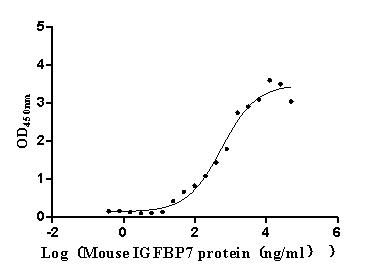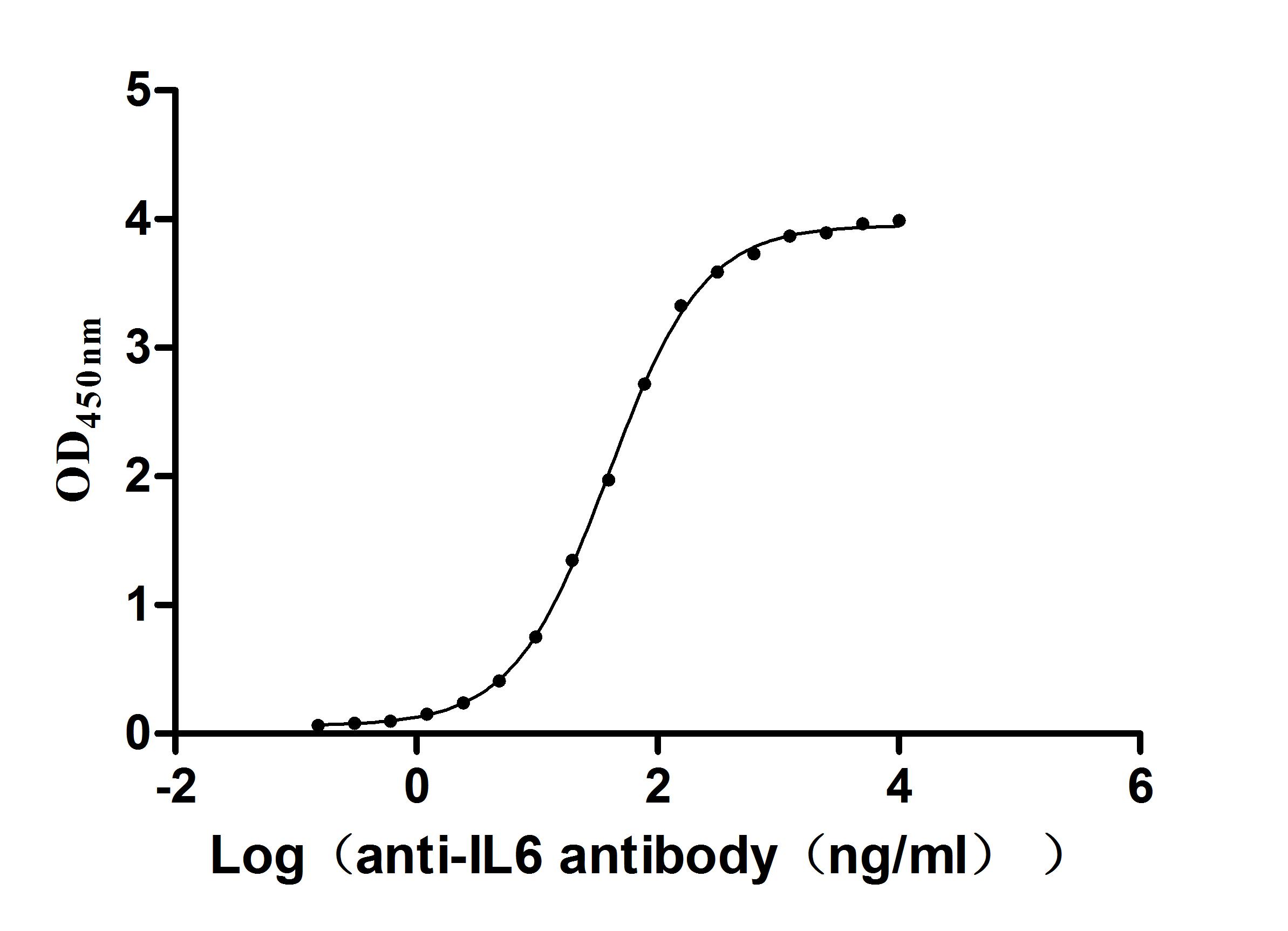Recombinant Saccharomyces cerevisiae DNA repair protein XRS2 (XRS2), partial
-
中文名稱:釀酒酵母XRS2重組蛋白
-
貨號(hào):CSB-YP341404SVG
-
規(guī)格:
-
來源:Yeast
-
其他:
-
中文名稱:釀酒酵母XRS2重組蛋白
-
貨號(hào):CSB-EP341404SVG
-
規(guī)格:
-
來源:E.coli
-
其他:
-
中文名稱:釀酒酵母XRS2重組蛋白
-
貨號(hào):CSB-EP341404SVG-B
-
規(guī)格:
-
來源:E.coli
-
共軛:Avi-tag Biotinylated
E. coli biotin ligase (BirA) is highly specific in covalently attaching biotin to the 15 amino acid AviTag peptide. This recombinant protein was biotinylated in vivo by AviTag-BirA technology, which method is BriA catalyzes amide linkage between the biotin and the specific lysine of the AviTag.
-
其他:
-
中文名稱:釀酒酵母XRS2重組蛋白
-
貨號(hào):CSB-BP341404SVG
-
規(guī)格:
-
來源:Baculovirus
-
其他:
-
中文名稱:釀酒酵母XRS2重組蛋白
-
貨號(hào):CSB-MP341404SVG
-
規(guī)格:
-
來源:Mammalian cell
-
其他:
產(chǎn)品詳情
-
純度:>85% (SDS-PAGE)
-
基因名:XRS2
-
Uniprot No.:
-
別名:XRS2; YDR369C; D9481.13; DNA repair protein XRS2
-
種屬:Saccharomyces cerevisiae (strain ATCC 204508 / S288c) (Baker's yeast)
-
蛋白長度:Partial
-
蛋白標(biāo)簽:Tag?type?will?be?determined?during?the?manufacturing?process.
The tag type will be determined during production process. If you have specified tag type, please tell us and we will develop the specified tag preferentially. -
產(chǎn)品提供形式:Lyophilized powder
Note: We will preferentially ship the format that we have in stock, however, if you have any special requirement for the format, please remark your requirement when placing the order, we will prepare according to your demand. -
復(fù)溶:We recommend that this vial be briefly centrifuged prior to opening to bring the contents to the bottom. Please reconstitute protein in deionized sterile water to a concentration of 0.1-1.0 mg/mL.We recommend to add 5-50% of glycerol (final concentration) and aliquot for long-term storage at -20℃/-80℃. Our default final concentration of glycerol is 50%. Customers could use it as reference.
-
儲(chǔ)存條件:Store at -20°C/-80°C upon receipt, aliquoting is necessary for mutiple use. Avoid repeated freeze-thaw cycles.
-
保質(zhì)期:The shelf life is related to many factors, storage state, buffer ingredients, storage temperature and the stability of the protein itself.
Generally, the shelf life of liquid form is 6 months at -20°C/-80°C. The shelf life of lyophilized form is 12 months at -20°C/-80°C. -
貨期:Delivery time may differ from different purchasing way or location, please kindly consult your local distributors for specific delivery time.Note: All of our proteins are default shipped with normal blue ice packs, if you request to ship with dry ice, please communicate with us in advance and extra fees will be charged.
-
注意事項(xiàng):Repeated freezing and thawing is not recommended. Store working aliquots at 4°C for up to one week.
-
Datasheet :Please contact us to get it.
靶點(diǎn)詳情
-
功能:During meiosis is involved in homologous recombination and during vegetative growth it is necessary for DNA repair. It probably regulates the 5'-3' exonuclease degradation of double strand breaks either at the initiation stage or a later stage.
-
基因功能參考文獻(xiàn):
- Xrs2 dependent and independent functions of the Mre11-Rad50 complex orchestrating the cellular response to double-strand DNA breaks have been described. PMID: 27746018
- The Saccharomyces cerevisiae Mre11-Rad50-Xrs2 complex promotes trinucleotide repeat expansions independently of homologous recombination. PMID: 27173583
- Phosphorylation sites on Xrs2 that are required for MMS resistance were identified. PMID: 27017623
- Mre11 recruits conjugated SUMO moieties to facilitate the assembly and function of the Mre11-Rad50-Xrs2 complex. PMID: 26743002
- the Xrs2 FHA domain and Tel1 kinase work in a coordinated manner to maintain DSB repair fidelity. PMID: 26990569
- the mechanisms of DNA end resection in Saccharomyces cerevisiae, which includes short-range resection by Mre11-Rad50-Xrs2 and Sae2, as well as processive long-range resection by Sgs1-Dna2 or Exo1 pathways. PMID: 26231213
- Data suggest that the major function of Sae2 in response to DNA double-strand breaks (DSBs) is to actively remove Mre11-Rad50-Xrs2 from break ends and prevent Rad53 in response to DSBs. PMID: 25831494
- To our surprise, genes encoding the Mre11-Rad50-Xrs2 (MRX) complex, which are also required for homologous recombination, are epistatic to TLS mutations PMID: 25343618
- Sae2 promotes dsDNA-specific endonuclease activity by the Mre11 subunit within the Mre11-Rad50-Xrs2 (MRX) complex PMID: 25231868
- Processing of DNA double-stranded breaks and intermediates of recombination and repair by Saccharomyces cerevisiae Mre11 and its stimulation by Rad50, Xrs2, and Sae2 proteins. PMID: 23443654
- A pivotal role for the MRX (Mre11, Rad50, Xrs2) complex for fork integrity at replication forks. PMID: 23376930
- interaction with Xrs2 may enable Pch2 to remodel chromosome structure adjacent to the site of a DSB and thereby promote accessibility of Hop1 to the Tel1 kinase PMID: 22072981
- a direct role for the Mre11-Rad50-Xrs2 complex in the base excision repair process, which contributes to resistance against base-damaging agents and to the avoidance of mutations PMID: 20040573
- total amount of Xrs2 protein is a critical determinant for the function of the Mre11/Rad50/Xrs2 complex especially with regard to telomere maintenance and meiotic DSB formation PMID: 15716496
- confirmed that signal joint formation in yeast is dependent on the same Mre11p-Rad50p-Xrs2p (MRX) complex factors known to be required in mammalian cells PMID: 15757898
- MRX (Mre11/Rad50/Xrs2) is not required for the intra-S-phase checkpoint in response to DNA alkylation damage, but is required in the presence of double-stranded DNA breaks PMID: 15970664
- The Mre11/Rad50/Xrs2 (MRX) complex is essential for joining of incompatible ends by non-homologous end-joining during DNA repair. PMID: 16043424
- Individual and combined deletions of the Yku80 C terminus and the Xrs2 forkhead-associated (FHA) domain were shown to block nonhomologous end joining. PMID: 16314503
- expression of EcoRI activated the G1 and intra-S phase checkpoints in a MRX- and Mec1-dependent, but Tel1-independent manner. PMID: 16879433
- Data show that the Saccharomyces cerevisiae MRX complex, or its subunits Mre11/Rad50/Xrs2, prefer G-quadruplex DNA much more than telomeric single-stranded or double-stranded DNA, implicating the possible existence of this DNA structure in vivo. PMID: 17698079
- Recombinant Sae2 binds DNA and exhibits endonuclease activity on single-stranded DNA independently of Mre11/Rad50 complexes, but hairpin DNA structures are cleaved cooperatively in the presence of Mre11/Rad50 or Mre11/Rad50/Xrs2. PMID: 18042458
- Forkhead-associated domain of yeast Xrs2, a homolog of human Nbs1, promotes nonhomologous end joining through interaction with a ligase IV partner protein, Lif1. PMID: 18458108
- the Xrs2-Lif1 interaction depends on Xrs2 FHA residues (R32, S47, R48, and K75) analogous to those known in other proteins to contact phosphorylated threonines PMID: 18832348
顯示更多
收起更多
-
數(shù)據(jù)庫鏈接:
KEGG: sce:YDR369C
STRING: 4932.YDR369C
Most popular with customers
-
Recombinant Human Receptor tyrosine-protein kinase erbB-3 (ERBB3), partial (Active)
Express system: Mammalian cell
Species: Homo sapiens (Human)
-
Recombinant Mouse Complement component C1q receptor (Cd93), partial (Active)
Express system: Mammalian cell
Species: Mus musculus (Mouse)
-
Recombinant Human Desmoglein-2 (DSG2), partial (Active)
Express system: Mammalian cell
Species: Homo sapiens (Human)
-
-
Recombinant Human Cadherin-6(CDH6),partial (Active)
Express system: Mammalian cell
Species: Homo sapiens (Human)

















